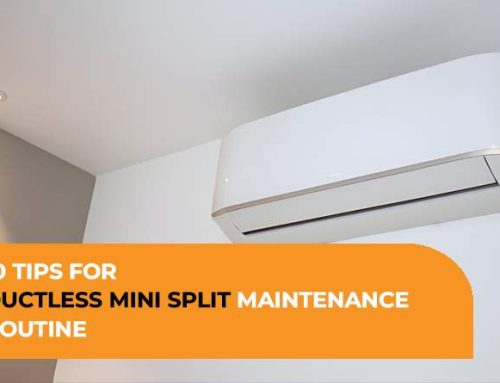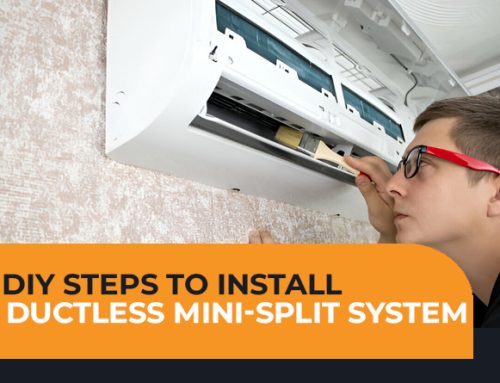Upgrading a fossil fuel boiler to a heat pump is a game changer that adds to the comfort level and offers an energy-efficient choice. Before installing the heat pump, it is important to understand how the whole process works.
This article will give you everything you need to know before replacing your boiler with a heat pump.
Moreover, The Bee Heat & AC has a team of professionals who deliver expertise in HVAC installation, annual maintenance, replacement, and other services.
Reach out online today for free consultation or maintenance services for your future project.
Stepwise Guide to Heat Pump Installation
A heat pump is a heating system that draws existing thermal energy into refrigerant to heat your home. Different types of heat pumps work on other sources and have different working principles.
Additionally, they offer a wide range of attributes to consider before installation. Hence, it is important to research heat pump types to determine the right size for your needs.
Further, here we explain what are the basic steps in a heating pump fitting that will surely help the homeowners looking for such a guide:
Step 1: Find some contractors
The first step of the process is to look out for the experts who offer these services. You can get help from Google, word of mouth, referral services, ads, or reviews.
But here is the tricky part. Energy reports reveal that 50-90% of residential heat pump installations must be corrected, leading to further issues such as extra maintenance, higher upfront costs, and time wastage.
We suggest only going for the contractors who are true to their words and have 5-star ratings on their social media platforms.
Moreover, try to find someone reliable from your referrals or friends circle rather than some random company.
Step 2: In-home consultation
This is where contractors play their role and help figure out the heat pump setup. A contractor can better guide us about the feasible location, specifications the system will need, type of heat pump, and budget quotation.
Many HVAC professionals suggest that getting an initial in-home consultation before HVAC installation or when you have finally decided to replace the boiler is a good idea.
It helps you get enough time to think, reconsider your decision, and look for alternative options.
Moreover, an initial consultation with a contractor is your best opportunity to spot any red flags and flaws in their working plan. It allows you to look for someone else and get a second opinion.
Step 3: Compare your available options
If you have time, try to get a quote and consultation from more than one HVAC installation and compare the options.
You can sniff out a fair price and find out who is more experienced in doing your task more accurately.
Additionally, while choosing the right contractor for installation, you can dig into the following concerns:
1: Is the installation price fair?
Remember that the average heat pump installation cost, including the incentive site, is more than $15000 based on the marketplace.
However, it also depends on the vast range of sizes and layouts suitable for your heating requirements.
Furthermore, it also depends if you are looking for a pump with ductwork or without a ducted system.
2: Can it meet your heating requirements?
Depending upon the requirements, a contractor can better suggest if a specific heat pump size will serve well for all your heating needs, even on the coldest day of the year.
Moreover, the size may vary if you want to keep it as a backup.
3: Is the heat pump the right size?
Choosing the right size for a heating pump is a critical challenge.
In most cases, an oversized heat pump installation is a common error that adds to the cost and energy expenses more than the desired budget and poor humidity control, efficiency, and reliability.
An HVAC professional will also handle all other concerns, such as the ductwork, pressure, and vacuum tests.
Once the assessment is done, your installer will provide details of their recommended heat pumps and help you decide.
Step 4: Pre-installation recommendations
After deciding on the heat pump size, the next move is to look for the pre-installation requirements and recommendations.
It includes improving your home’s insulation, replacing the worn-out radiators, and obtaining planning permission.
This includes best practices like a heat load calculation for system sizing, confirming that your ductwork is adequate for the load, and selecting the right equipment for your heating region.
All these recommendations help follow installation best practices in the community premises and improve heat pump efficiency. So, take your time to follow all these suggestions to enjoy the cozy environment you desire.
Step 5: Fitting the units
The next step starts with the fittings. Firstly, install the inside unit at the right place. Connect the cables and pipes to the external unit.
It also involves using the anti-vibration feet in the best location for clearance requirements and ensuring the line set length is within manufacturer specifications.
Step 6: Connection and testing
Once both the units are fitted and the pipes are installed accurately. The technician will connect them to perform several security checks.
Further, they may take some airflow and temperature measurements to maximize efficiency.
The testing phase ensures everything is connected properly and everyone is safe around. Any malfunctioning at this time indicates that connections are unsafe and need some fixations.
Step 7: All set!
Once the testing is done, the contractor must show you how to use the new system. It might come with a thermostat or a remote for some ductless systems.
They must go through a test to ensure all the features and functions of the device. And then you are good to go for your next season!
If you are looking for a reliable service to install, repair, or replace services for furnaces, heat pumps, and broilers in Colorado, The Bee Heat & AC is your one-stop destination.
With a comprehensive range of services under the same roof, you will find the best troubleshooting services in the town.
FAQs
How is a heat pump installed?
An outdoor unit is positioned on an external wall. Moreover, an indoor unit is placed at the prime location inside the house. Cables, pipes, and ducts are connected. Safety and measurement tests are performed to confirm that everything is running fine.
Can I install my heat pump?
You can install a heat pump independently, but it requires professional help or guidance. You will need a professional for in-home installation.
How long does it take to install a heating pump?
It takes almost three to four hours to install a heating pump. Moreover, it also depends on the experience and expertise of the HVAC technician.
Are heat pumps for water or air?
Air-to-air heat pumps provide a cozy environment only without any water heating connection. Air-to-waters offer both underfloor heating and hot water for domestic use.


